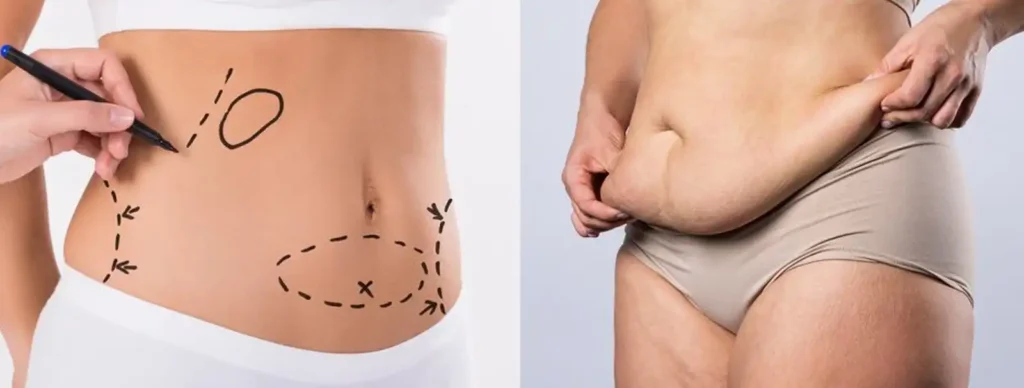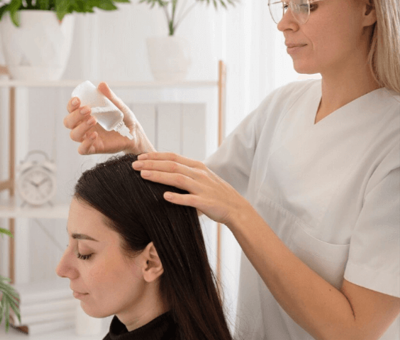Combining Aesthetic Surgery with Functional Treatment in South Korea
Tummy tuck surgery (abdominoplasty) is best known for its cosmetic benefits—flattening the abdomen, removing loose skin, and tightening muscles. But for many patients, especially those who’ve experienced pregnancy, weight gain, or abdominal surgeries, a tummy tuck in Korea can offer something far more valuable: the opportunity to repair a hernia—specifically a ventral or umbilical hernia—at the same time.
Korean plastic surgeons often integrate hernia repair and abdominoplasty into a single, safe, and efficient procedure. Here’s how top Korean clinics approach this dual-purpose surgery and why patients worldwide are traveling to Seoul for this advanced care.
🧠 What Are Ventral and Umbilical Hernias?
A hernia occurs when an organ or tissue bulges through a weak spot in the abdominal wall. The two most common types treated during a tummy tuck are:
✅ Umbilical Hernia:
- Occurs near the belly button
- Often caused by pregnancy, obesity, or prior abdominal surgery
- Can lead to pain, swelling, and cosmetic bulging
✅ Ventral Hernia:
- Occurs anywhere along the midline of the abdomen
- Can result from weakened abdominal muscles due to previous surgeries (like C-sections or laparotomies)
- May cause discomfort, digestive issues, or bowel obstruction if left untreated
🏥 How Korean Clinics Integrate Hernia Repair with Tummy Tuck
Many board-certified plastic surgeons in Korea are trained to perform both abdominoplasty and hernia repair simultaneously—a practice that is both efficient and medically sound.
🔧 Surgical Process Overview:
- Pre-surgical Assessment
- Korean surgeons conduct ultrasound or CT scans to diagnose hernia type, size, and location
- Thorough evaluation ensures a customized surgical plan
- Hernia Reduction & Repair
- The hernia is reduced (pushed back into the abdominal cavity)
- Mesh reinforcement or suture-only repair is performed to strengthen the abdominal wall
- Abdominoplasty Execution
- Excess skin and fat are removed
- The abdominal muscles are tightened (especially in diastasis recti cases)
- Incisions are closed strategically for minimal visible scarring
🇰🇷 In Korean clinics, this dual approach prioritizes both functional correction and cosmetic refinement, often using scar-minimizing techniques and cutting-edge mesh materials.
💡 Medical and Aesthetic Benefits of Combined Hernia + Tummy Tuck Surgery
| Benefit | Explanation |
|---|---|
| ✅ One Surgery, One Recovery | Avoid multiple surgeries by combining both procedures |
| ✅ Reduced Risk of Recurrence | Stronger abdominal wall lowers future hernia risk |
| ✅ Enhanced Core Support | Muscle repair improves posture and mobility |
| ✅ Improved Aesthetic Result | Simultaneously flattens the abdomen and removes bulge from the hernia |
| ✅ Better Scar Placement | Single incision rather than multiple surgical sites |
| ✅ Lower Overall Cost | Cost-effective compared to separate surgeries in different countries |
🎯 Why Korea is a Global Leader in Functional Abdominoplasty
Korean plastic surgery is known for precision, innovation, and seamless integration of aesthetics with functionality. Here’s why hernia repair with tummy tuck is especially effective in Korean clinics:
🧑⚕️ 1. Multidisciplinary Teams
- Collaboration between plastic surgeons, general surgeons, and radiologists
- Ensures accurate diagnosis and tailored treatment plans
🔍 2. Pre-Op Imaging and Custom Mesh
- Use of 3D CT or ultrasound for high-resolution hernia mapping
- Selection of lightweight, biocompatible mesh materials to prevent complications
💉 3. Minimal-Incision Techniques
- Use of low-scar placements, often below the bikini line
- Application of laser-assisted wound care and RF therapy for faster healing
🌐 4. International Patient Services
- English-speaking care coordinators
- Pre-arrival consultations and post-op follow-ups via telemedicine
- Medical reports translated for home-country physicians
⚠️ What Happens If You Don’t Repair the Hernia?
Left untreated, ventral or umbilical hernias can lead to:
- Persistent pain or discomfort
- Progressive bulging or skin thinning
- Intestinal obstruction or strangulation (emergency)
- Increased surgical complexity later
💬 In Korea, many tummy tuck candidates are unaware they have a hernia until pre-op imaging reveals it—early diagnosis is key.
📝 What to Ask During Your Korean Clinic Consultation
When considering hernia repair with tummy tuck in Korea, ask:
- Can you repair my hernia during the abdominoplasty?
- Will you use mesh or suture-only technique?
- Is your team experienced in functional tummy tucks?
- What’s the recovery timeline and how soon can I travel?
- Will you provide medical documentation for insurance?
⏳ Recovery Timeline for Hernia + Tummy Tuck
| Post-Op Timeframe | What to Expect |
|---|---|
| Days 1–3 | Rest, mild swelling and discomfort, first clinic visit |
| Days 4–7 | Gradual mobility, drainage tubes may be removed |
| Day 10–14 | Stitches removed, compression garment continues |
| Week 3–4 | Light activity allowed, walking encouraged |
| Week 6+ | Full return to normal exercise and travel clearance |
🛏 Some Korean clinics offer post-op recovery houses with on-site nurses and daily care.
🌟 Patient Testimonial (Example)
“I came to Seoul thinking I only needed a tummy tuck, but my surgeon discovered an umbilical hernia during the pre-op scan. I’m so grateful they repaired it at the same time! The recovery was smooth, and I now have a flat stomach and no more discomfort.”
— Jenny, 37, from Australia
📍 Final Thoughts
A tummy tuck in Korea is no longer just a cosmetic procedure—it’s a comprehensive abdominal restoration. If you suffer from a ventral or umbilical hernia, choosing a Korean clinic for combined hernia repair and tummy tuck offers unmatched efficiency, safety, and aesthetic outcome.




